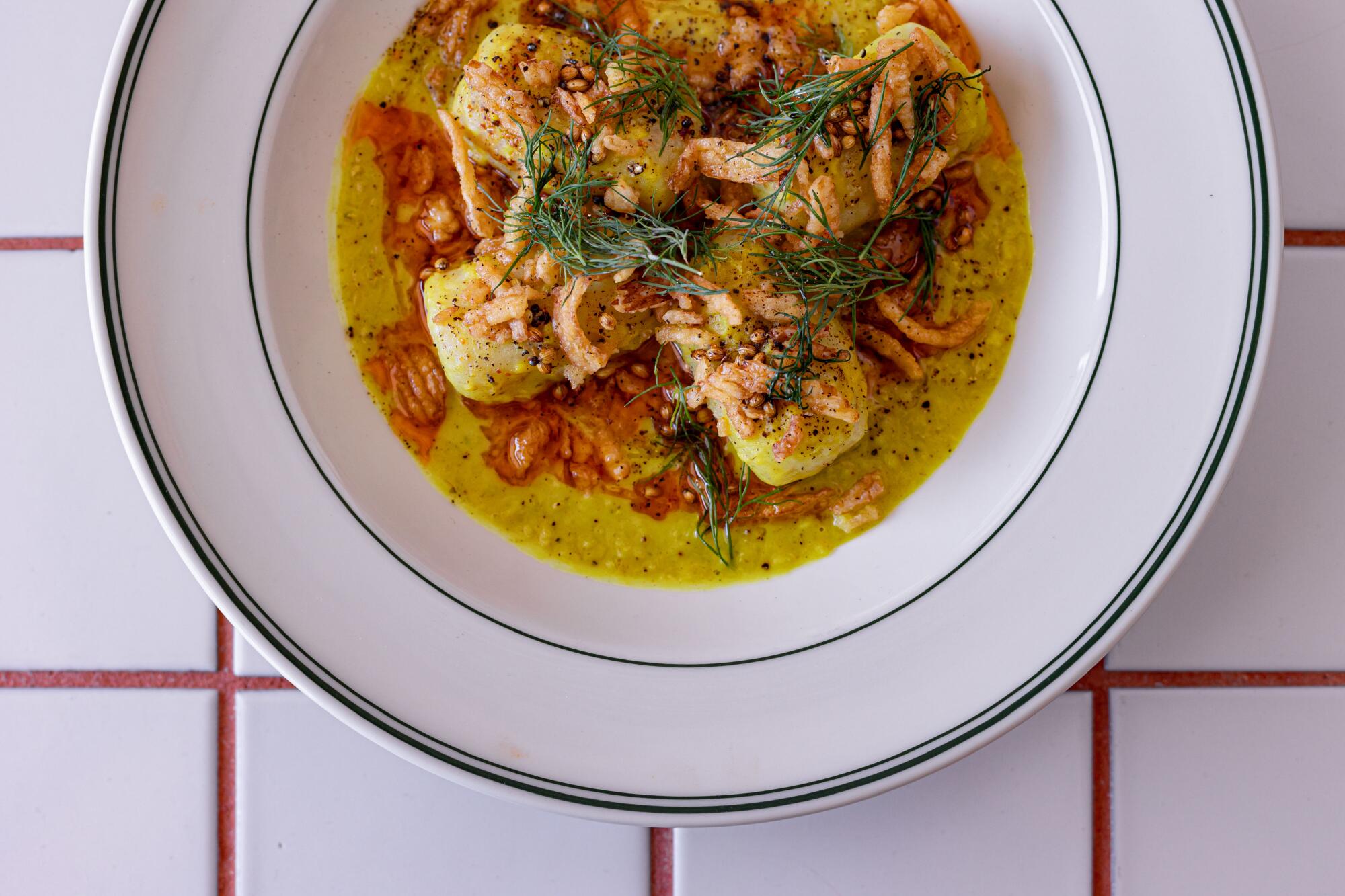
Located in the old Sunset Foot Clinic space, the individualism of Pijja Palace is welcome on many levels.
- Share via
Have you swung by the summer’s hottest dining sensation yet? The sports bar that serves Indian American food in the Silver Lake strip mall where the legendary Happy Foot Sad Foot sign spun for 30 years?
That’s a fun sentence to type, though Pijja Palace is far more joyful to experience in person. Its crisscrossing influences and owner Avish Naran’s we-do-what-we-want irreverence feel innate to the city, but there is also nothing else quite like it in Los Angeles.
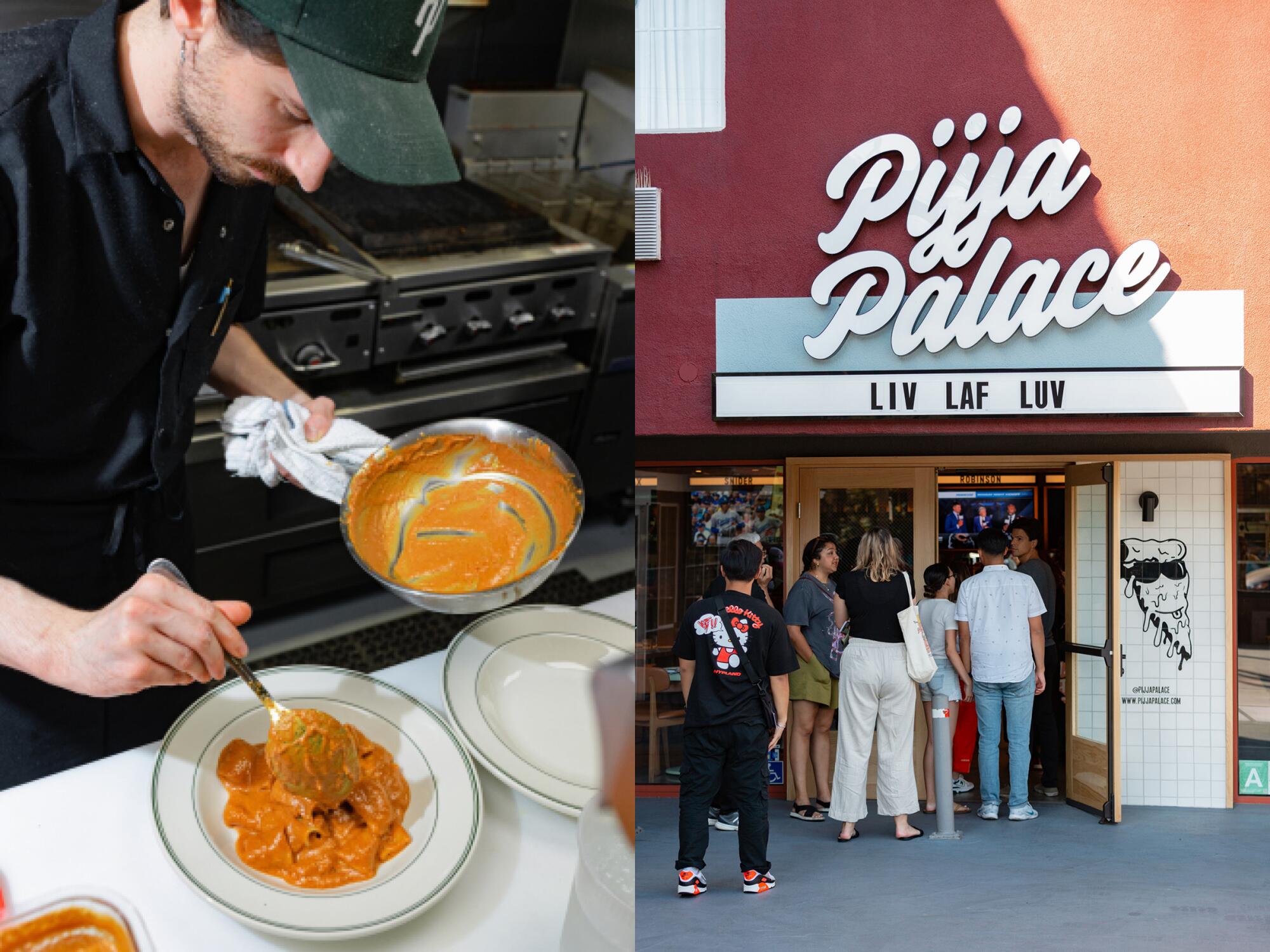
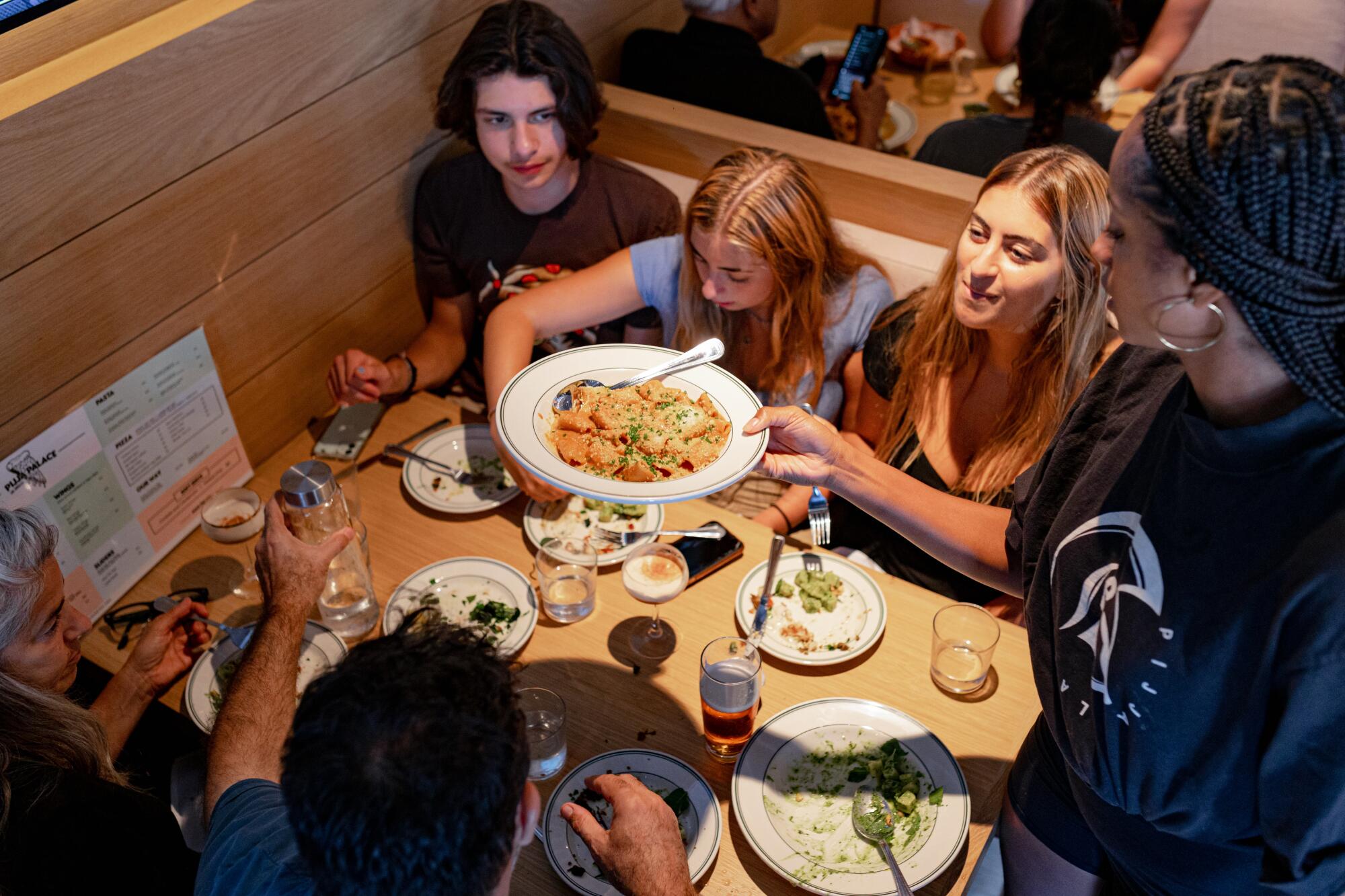
The restaurant indeed dwells in the space formerly occupied by Sunset Foot Clinic, which moved in 2019. When Pijja Palace opens at 5 p.m., cars quickly fill the few parking spaces in the complex’s tight lot. The rest of us drive around, finding what we can along Sunset Boulevard or on neighboring residential streets. Approaching the doorway, the eyes begin tracking the rapid-pace images flashing inside: Thirteen TV screens mounted around the dining room are broadcasting whatever game happens to be playing locally that night.
Otherwise, the decor upends any cliched notions of a “sports bar.” Beige banquettes, light woods, chairs with rounded backs in a vaguely Midcentury Modern style, smallish tables in pinks and greens: It gives off the air of a business-class lounge in a Scandinavian airport. Noise-wise, it’s the opposite of preflight calming: Cement floors make the small space — which is always packed by 6 p.m., including the dozen unreserved seats along the back-wall bar — a ricocheting din of voices and consumption.
All these competing elements pleasantly jangle the brain and set the mood for the evening ahead.
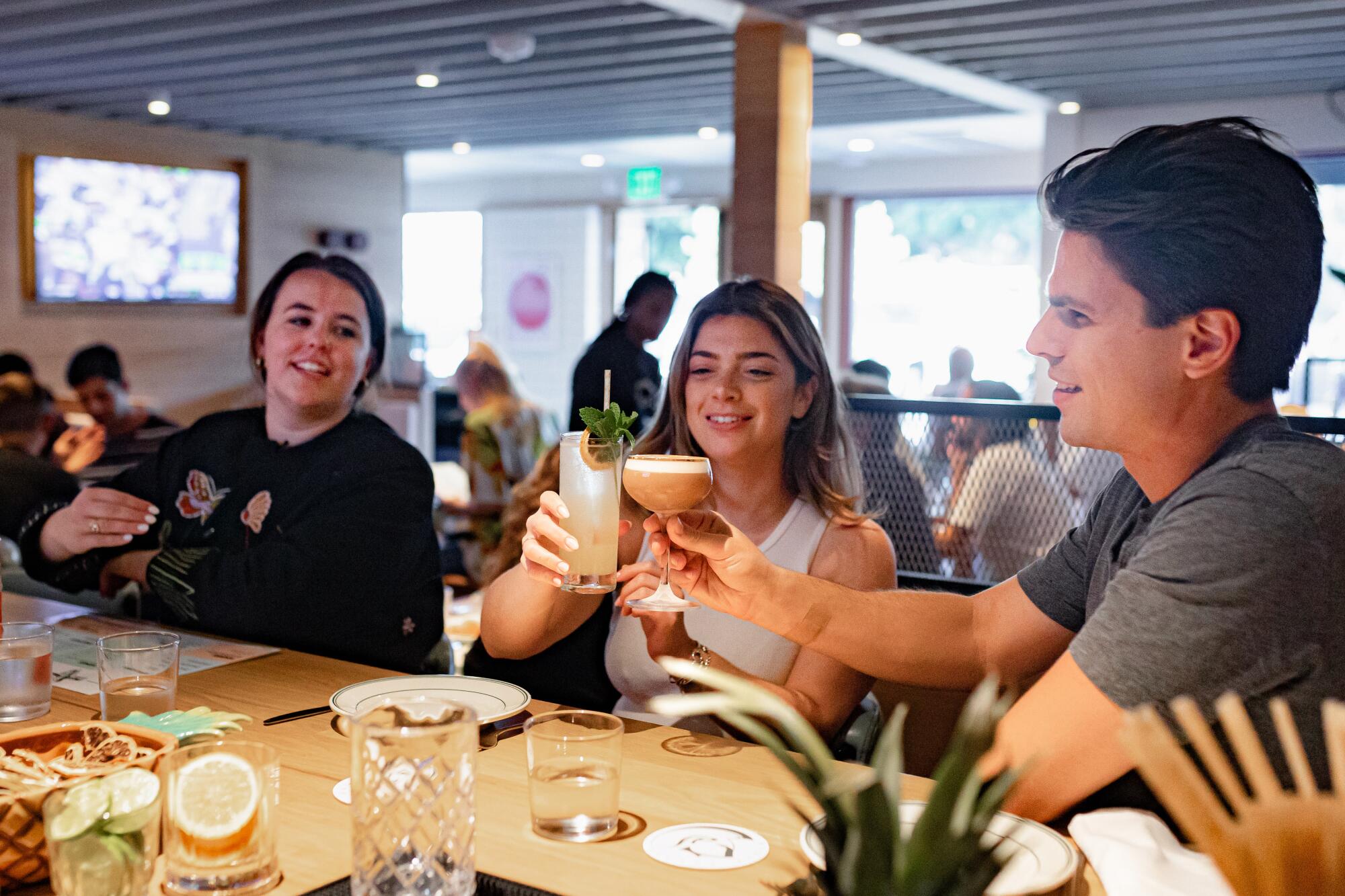
On most tables you see at least one chai whiskey sour, shimmery with warm spices and almost too easy to gulp down. Cocktails lean sweet and fruit-laced: rum in a tropical squall of guava, pineapple and coconut; a martini’s distant cousin honeyed with mango and apricot liqueur. I go for the driest option in the house: vodka from India’s Smoke Lab label scented with lemon and holy basil and splashed with Dolin Blanc and seltzer. Among a lighthearted list of cream sodas and other nonalcoholic drinks, look for the one made with tamarind, lime and Rooh Afza, a fruit syrup concentrate with notes of rose and citrus that was formulated as a summer refreshment in Delhi in 1907.
This technically being a sports bar, there are more than a dozen beers on draft, checking the familiar boxes of IPAs, lighter ales and stouts. The cooking follows no such conventions. For a menu dominated by wings, pastas and pizzas reimagined with broadly Indian flavors, Naran and executive chef Miles Shorey create their own cohesive logic.
Nibble onion rings battered in lentil flour and swiped through a sticky mango chutney, or thin pods of fried okra dusted in chile powder, while finishing your first round of drinks. Sliders are built two to an order underneath a pull-apart bun that arrives still conjoined. Choose between a flattened lamb kebab or satisfying, squishy-crisp aloo tikki; imagine a spiced potato filling for a samosa shaped into a patty. Both will be crowned with onion salad and a melty white slice of Amul, India’s answer to American cheese.
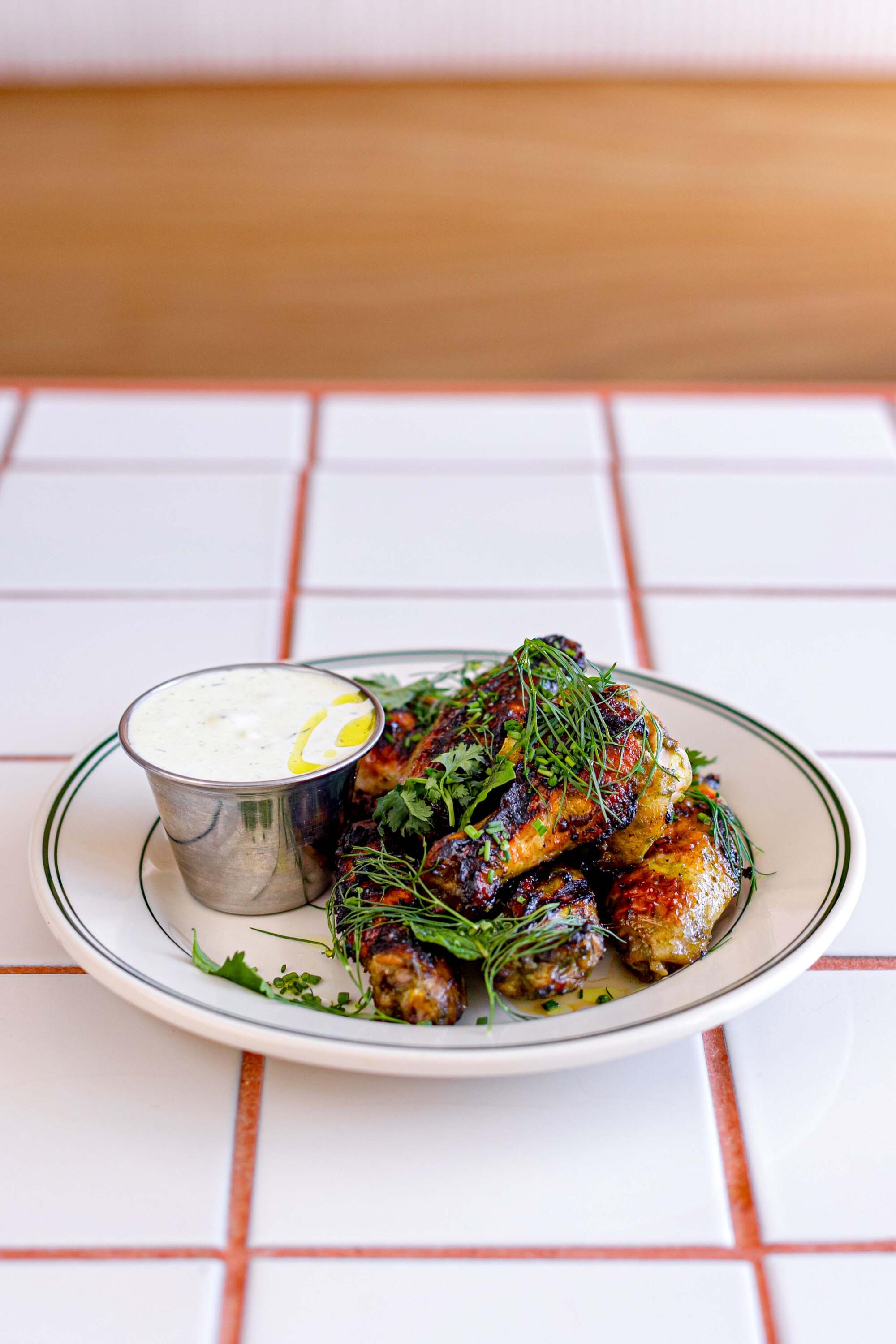
Wings come color-coded: “red” bright with chile and infused with the attuned trinity of garlic, ginger and garam masala; turmeric-dyed “yellow” slicked with honey and a blend of horseradish and spicy mustard that could both be turned up in volume; and my favorite, “green” dressed in a cilantro-mint-chive chutney. The cool, bright taste of the herbs pops in contrast to the uniform char around the chicken. A vegetarian counterpart of spicy-sweet cauliflower fried into crisp blocks brings to mind gobi Manchurian, a ubiquitous dish when Indo Chinese cuisine, still popular in India, had its biggest American moment in the 2000s.
By the time the malai rigatoni lands, you have reached the center of Pijja Palace’s culinary maze. A simmered mixture of gentle tomato masala and cream blankets the pasta; the reedy twang of coriander seed cuts through all the velvetiness.
This is a prime example of Naran’s mind at work and play. He studied both restaurant management and cooking in professional settings, including brief stints in some of the Bay Area’s fancier Indian restaurants, before casting aside as many rules as possible.
Have you ever had vodka tomato sauce from an Italian American menu? Have you ever ordered butter chicken in a northern Indian restaurant? Then malai rigatoni will make easy, innate sense, even if the loungey sports bar context in which it’s presented feels odd and thrilling.
Some pastas have obvious magnetic appeal. Saffron and the sweet musk of Indian long pepper perfume a dish that otherwise looks and comforts like Kraft shells and cheese. Short, porous tubes meant to resemble the shape of rickshaws — they’re cute — snare cilantro-mint pesto and the scattered cashew bits that add appreciated crunch.

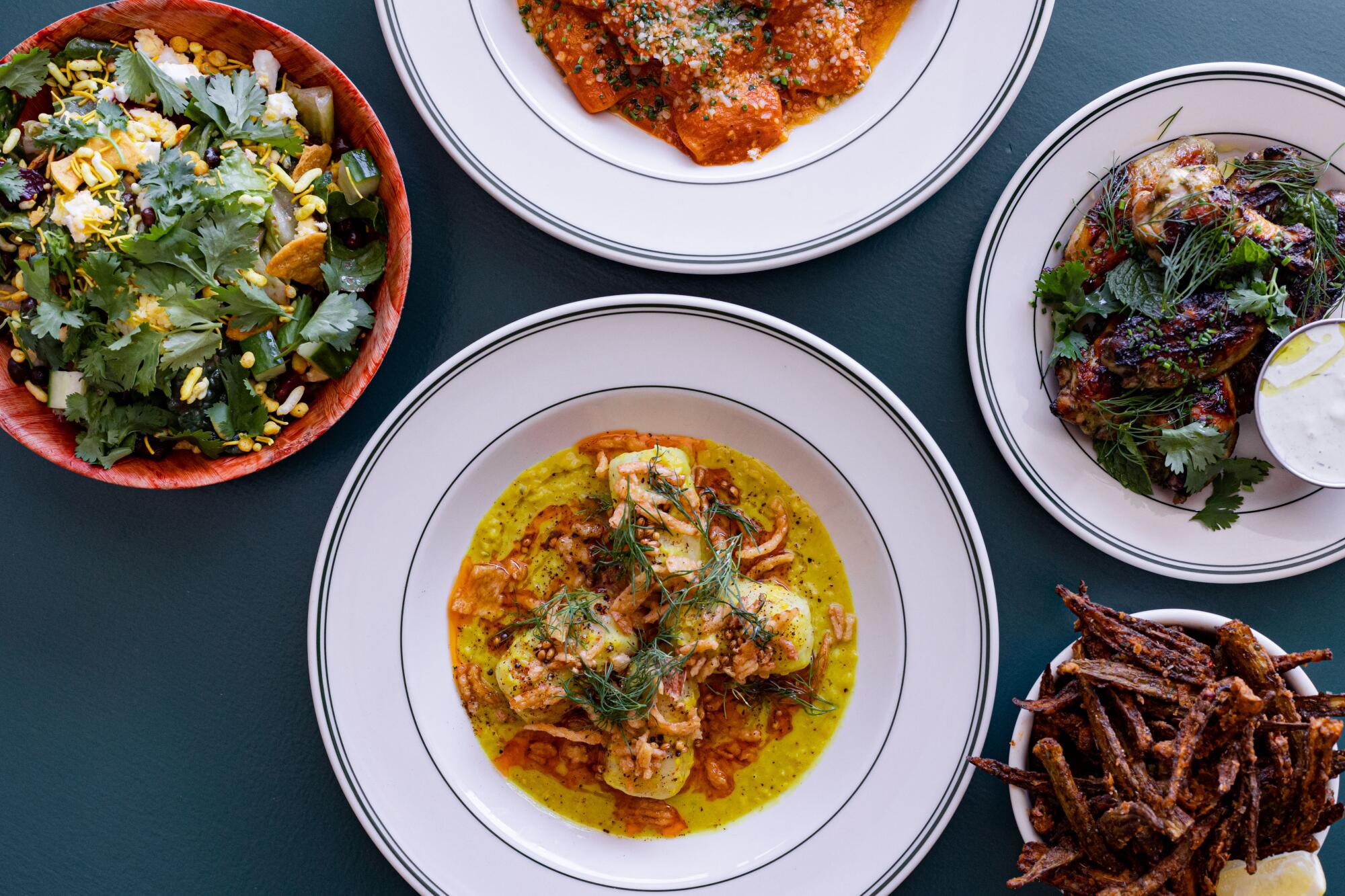
But the inconspicuous sleeper hit? That’s the chaas dumplings. If I’m sharing, I’ll admittedly only eat one of the doughy balls, lightened slightly with yogurt in the recipe. But underneath the dumplings is softly textured dal, heightened by chhonk (also called takda, a technique of frying spices in ghee or oil and pouring them over a dish as a final layer of flavor) thrumming with cumin. Its flat-out excellence is a reminder: In a city where one can find countless, specific expressions of global cuisines — Mexican, Korean, Japanese and Chinese at the forefront — we have a dearth of exceptional Indian restaurants. The individualism of Pijja Palace is welcome on many levels.
As for the namesake pies, Naran and Shorey do their best to eschew labels, but I’d narrow the inspiration down to East Coast-style bar or tavern pizzas: thin, chewy-crisp crusts with plenty of sauce and cheese all the way to its blackened edges. The notion of “Indian pizza” isn’t new, neither in India nor stateside. I recall encountering variations on the theme in the Bay Area while working at the San Francisco Chronicle 15 years ago. But this pair carves out space even in the midst of a golden pizza moment in L.A.
Bill Addison breaks down his top 10 favorite new pizzerias so far in 2022.
No need to go too crazy with the build-your-own combinations. A relatively mild vindaloo sauce topped with chicken tikka and tandoori onions? Trust me, that’s plenty. For good reason, the restaurant sells many of its custom “green chutney pijjas”: a tomato pie, its sauce threaded with dried fenugreek leaves, served with an arty splatter of green chile chutney over top. The pizzas in general are rich, and the green chutney pijja best brings the acidity for balance.
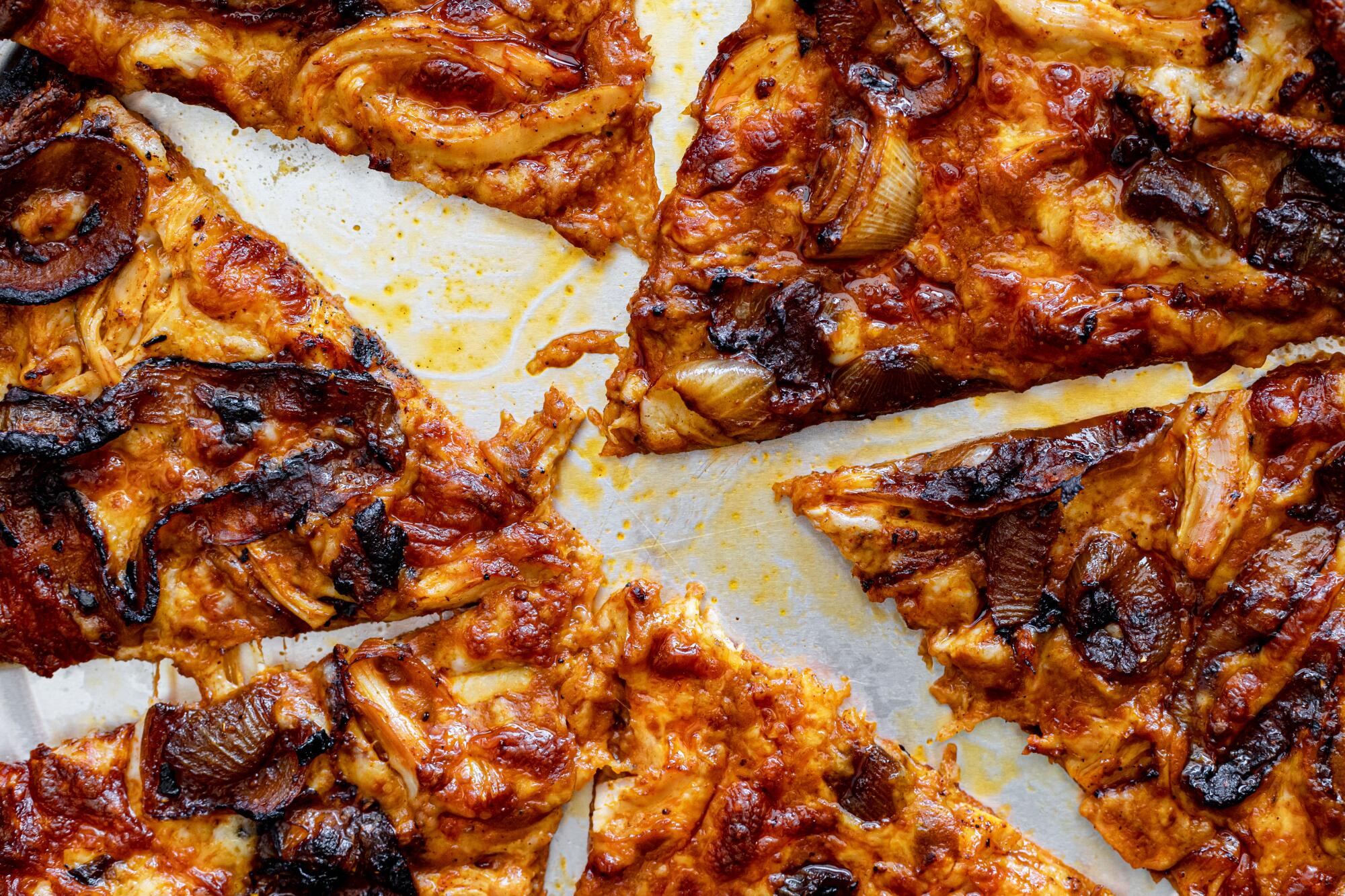
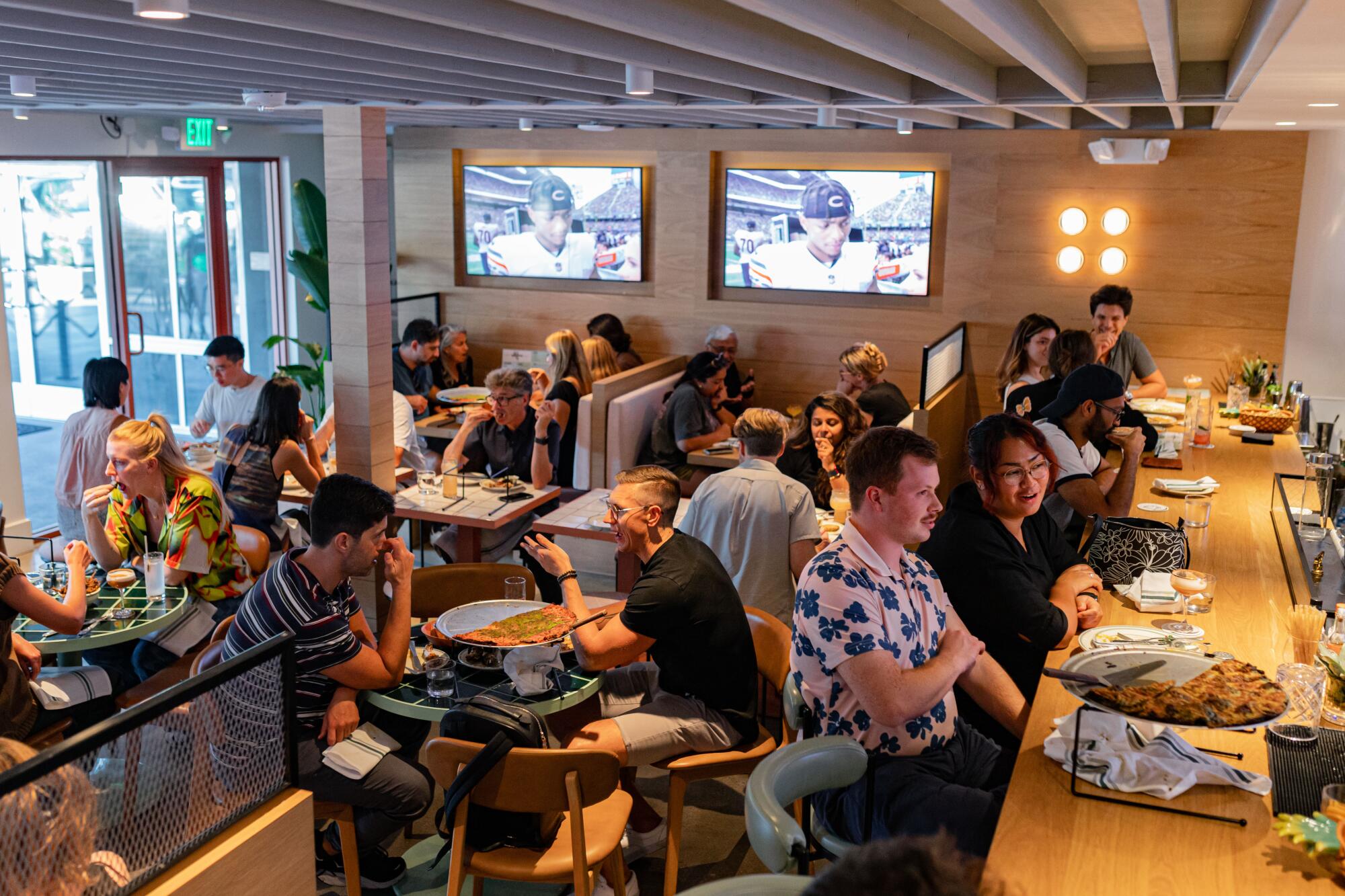
It’s around this time, usually feeling very full, that I look up from my meal and appreciate not just the space but the people, both staff and customers.
The patient souls who keep this nearly 4-month-old, busy-from-Day-One operation running smoothly are as wonderfully distinctive as the place itself. One wears a handheld device for ringing in orders on his wrist “like an Apple watch,” they quipped. I’ve watched one bartender disappear into a trance lip-synching Kygo’s remix of “What’s Love Got to Do With It” while pouring a Guinness and stirring an old-fashioned pretty much at once.
Angelenos can sometimes exist in a series of homogenous bubbles, and it’s heartening to be in a space where customers of all kinds are commingling. I’m talking not only about racial backgrounds but chosen tribes: sports geeks alongside fashionistas and food obsessives excited about a place making riskier choices and succeeding.
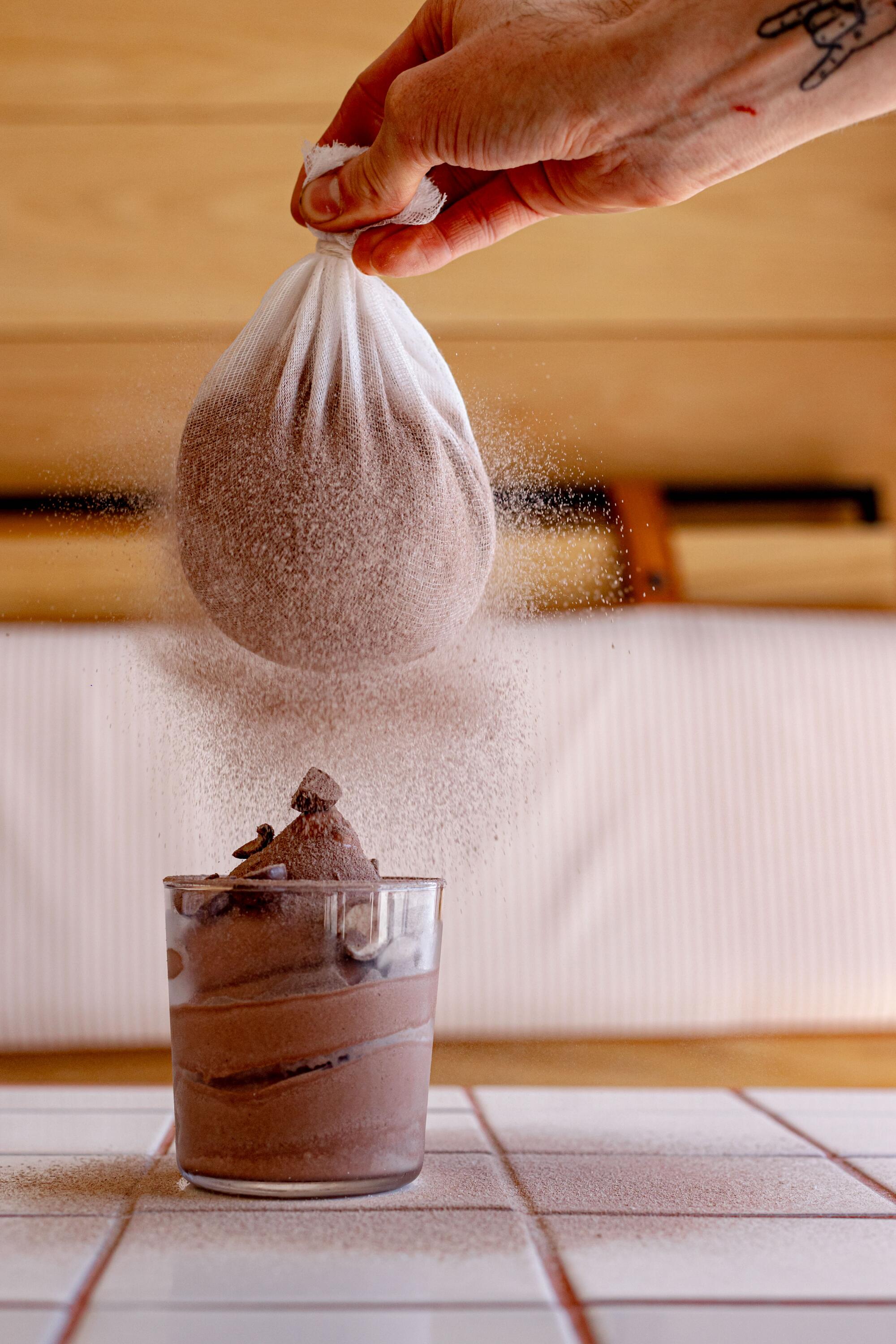
Any restaurant as immediately mobbed as this one will have some growth edges — the rigatoni can occasionally be gummy, sure — and it needs time to settle into what it will become. The kitchen recently began making square pies for takeout and delivery. They aren’t as blackened as a strict Detroit-style pie and not nearly as airy as a Sicilian variation. If Naran and Shorey revealed that they used a Pizza Hut pan pizza as a model for their square pie, it wouldn’t surprise me.
I think about how chill and even a little spoofy Pijja Palace comes off at first pass, and how ultimately transformative it is as a reminder that restaurants need not take the safe route even in tumultuous times. Then I flash on its logo. It’s an anthropomorphized slice of pizza, dripping cheese, sporting sunglasses and sticking its tongue out irreverently. Its shape is not altogether different from the emotive illustrations on the complex’s Sunset Foot Clinic sign, now covered in brown tarp.
That can’t be a coincidence? In any case the pizza slice strikes me as happy, definitely not sad.
Pijja Palace
2711 Sunset Blvd., Los Angeles, pijjapalace.com
Prices: Appetizers $7-$14, wings $13, pastas $17-$22, pizzas $13-$26, soft serve $8.
Details: Open 5-9:30 p.m. Sunday, Wednesday and Thursday; 5-10:30 p.m Friday and Saturday. Full bar. Lot and street parking.
Recommended dishes: Onion rings, green wings, lamb kebab sliders, chaas dumplings, green chutney pijja.
More to Read
Eat your way across L.A.
Get our weekly Tasting Notes newsletter for reviews, news and more.
You may occasionally receive promotional content from the Los Angeles Times.












